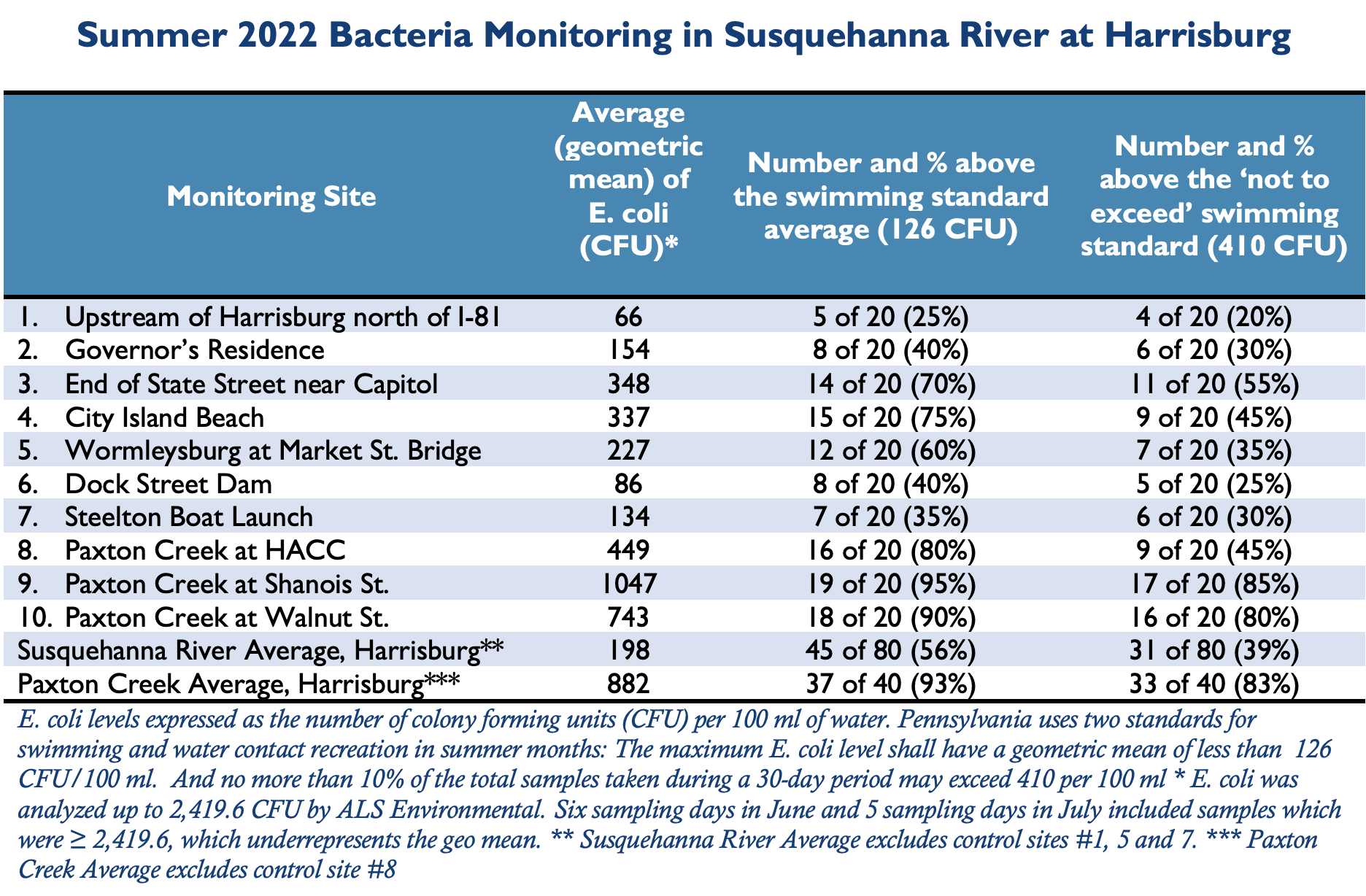Feds Give Harrisburg PA A Deadline For Solution To Chronic Sewage Overflows
With Unsafe Fecal Bacteria Levels in Susquehanna River, EPA Consent Decree Mandates Effective Control Plan by 2024
With Pennsylvania’s capital releasing hundreds of millions of gallons of raw sewage and stormwater into the Susquehanna River every year, EPA and the state today filed a consent decree in federal court that will require Capital Region Water to create an effective long-term control plan by Dec. 31, 2024, to reduce sewage overflows.
Harrisburg has a more than century-old combined sewage and stormwater system that overflows more than once a week, on average, into the Chesapeake Bay’s biggest tributary. Monitoring for fecal bacteria along the Harrisburg waterfront last summer found that 56 percent of samples had levels of E. coli that would be unsafe for swimming or water-contact recreation.
EPA and the Pennsylvania Department of Environmental Protection (DEP) in 2015 sued Harrisburg and Capital Region Water over the chronic overflows, but the water authority failed to make any progress in fixing the problem. That prompted a legal intervention by the Lower Susquehanna Riverkeeper and Environmental Integrity Project in 2021. Then today, EPA and DEP issued a new deadline, backed with threats of penalties.
“Given Harrisburg’s long history of failing to address this obvious public health hazard, it is critical that EPA and DEP hold Capital Region Water strictly accountable for compliance with the modified consent decree’s deadlines and terms,” said Ted Evgeniadis, the Lower Susquehanna Riverkeeper. “Pennsylvania must step up and help Capital Region Water with funding to end these sewage overflows and avoid future delays. No more extensions or modifications can be given, and any violation of the deadlines must trigger the immediate application of penalties.”
Potential penalties in the modified consent decree filed in court today range up to $3,000 per day, depending on the violation. The modified consent decree gives Capital Region Water a deadline of December 31, 2024, to submit to EPA for the agency’s approval a revised and updated long-term control plan for controlling overflows that conforms to the EPA’s requirements for combined sewage and stormwater systems.
“This is an opportunity for Harrisburg to come up with a real solution to the sewage overflow crisis in the state capital through long-needed infrastructure improvements,” said Jen Duggan, Deputy Director of the Environmental Integrity Project. “Cities across the U.S. with antiquated sewage systems have solved this problem, and Harrisburg can, too.”
The Environmental Integrity Project and Lower Susquehanna Riverkeeper released a new report today, “Stopping Sewage Overflows in Harrisburg,” that provides specific examples of cities large and small, poor and wealthy, across the U.S. that have solved similar combined sewage overflow problems over the last two decades.
For example, Saginaw, Michigan, a city of 44,000 people – smaller than Harrisburg, and with a higher poverty rate – built a $110M series of underground retention basins during the 1990s that temporarily hold sewage mixed with stormwater during rainstorms, until the wastewater can be treated.
Another example is Bremerton, Washington, which halted its sewage and stormwater overflow problem by investing $50M building separate sewer lines and pumping stations. Boston and Portland are also featured in the report as cities that have successfully tackled the same combined sewage overflow problems as Harrisburg. For a copy of the report, click here.
For the last four summers, the Lower Susquehanna Riverkeeper has been monitoring fecal bacteria levels along the Harrisburg waterfront, including near outfalls leading from the State Capitol Complex and Governor’s Residence.
The Riverkeeper found that, last summer, 40 percent of 20 samples taken just downstream from the outfall near the Governor’s Residence had unsafe levels of E. coli bacteria. Seventy percent of the 20 samples taken near the outfall near the State Capitol Complex had levels of fecal bacteria that would be unhealthy for swimming or water contact recreation.
Overflows from Harrisburg’s outfalls average about 800 million gallons of sewage and stormwater a year. They totaled 1.1 billion gallons in 2021, 584 million gallons in 2020, 900 million gallons in 2019, 1.4 billion gallons in 2018, 899 million gallons in 2017, and 789 million gallons in 2016, according to reports from Capital Region Water.
The full results of the Lower Susquehanna Riverkeeper’s 2022 bacteria monitoring are below
Source: Lower Susquehanna Riverkeeper Association
